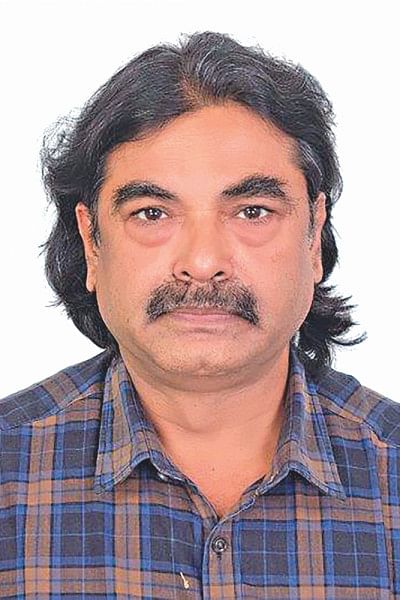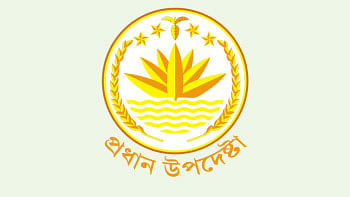“The future of skills includes attributes such as leadership quality, critical thinking, innovation and lifelong learning”

With the fourth industrial revolution in full swing, which areas of skills development need more focus?
Bangladesh needs to put more emphasis on IT. The future of skills includes attributes such as leadership quality, critical thinking, innovation and lifelong learning. Much of what we learnt five years ago is not relevant at present. Life Long Learning for re-skilling and skill upgradation is urgently required in the country’s skills system. Automation has led to many people in Bangladesh losing their jobs, such as in the RMG sector, and this trend will continue to grow if the country’s skills system does not catch up with this reality.
What have been the major challenges in developing skills in Bangladesh? What sort of solutions would be required to overcome these challenges?
One of the biggest challenges lies in co-ordination among different ministries which are imparting skills, in terms of adopting the National Technical and Vocational Qualifications Framework (NTVQF) or job-focused skills training systems. Another challenge is the Government’s low investments in technical education and improving the quality of education. In addition, skills institute-industry engagement is missing. Bangladeshi skilled workers’ remittances are less than those of workers from other countries. Bangladesh TVET qualification is hardly recognised outside the country. Thereby, skills recognition is one area that needs attention.
For the domestic market, apprenticeship could be one of the quickest solutions. We have about forty thousand such apprentices who are learning the crafts of various trades. We have developed a system where they will be awarded a competency-based certificate upon completion.
The private sector industries also need to focus on skills development and investment in upgrading and re-skilling their own workers in response to technological changes. They need to support technical institute-industry partnerships. The industry should develop capacity in skills anticipation and work closely with the National Skills Development Authority (NSDA) and skills institutes.
What is the present status of Technical and Vocational Education and Training (TVET) in the country? How are these institutions contributing to the development of skills in Bangladesh?
Since TVET education has stigma surrounding it, people prefer to take the general education route. Only nine percent of people graduating from higher secondary education opted for technical education thereafter, but the numbers have now increased to 14 percent.
The NTVQF is a skills framework in Bangladesh of global standard. Many development partners including Asian Development Bank (ADB) and World Bank, have also contributed to its implementation. Rural areas in Bangladesh do not have many TVET institutes. However, rural people visit nearby towns and use the facilities of TVET institutes closest to them. To promote skills in rural areas and small towns, ILO initiated another pathway i.e. quality apprenticeship with proper certification. It was started by ILO in partnership with UNICEF and BRAC during the fiscal year of 2009-10.
ILO introduced the skills framework into Bangladesh. Our attention has been on job-focused skills. ILO has recently completed the Bangladesh Skills for Employment and Productivity (B-SEP) project in Bangladesh. ILO, along with other development partners, heavily invested in skills and employment. The Government revenue system, however, has not allocated enough money for a skills reform.
Technical schools and colleges and polytechnic institutes are streams of the TVET in Bangladesh. ILO has set up twelve industry skills councils (ISCs) in twelve sectors. The role of such councils is to identify the skills needs of each sector, prioritise those needs and engage with Bangladesh’s technical education board in developing the curriculum and competencies.
What is being done in the field of TVET teacher training?
There is a lack of teachers in the TVET system since there exists many job vacancies. These teachers come from the Bangladesh Public Service Commission. There is an insufficient number of teachers’ training centres. Technical Teachers Training College (TTTC) and Vocational Teachers Training Institute (VTTI) Bogura are examples of institutes which have been established for teachers of technical education in Bangladesh. The Bogura Polytechnic Institute is an attempt by the Government and ILO’s European Union funded Skills 21 project to have an institute in Bangladesh which may, in the future, rival the standards set by renowned foreign training institutes.
For students enrolling in TVET programmes, how is their job placement being handled?
Employment support services need to be established in the TVET sector at the institutional, divisional and city level. The talents of each individual vary and so career counselling could guide graduates onto the right paths. We established eight employment support services/career counselling centres through the B-SEP project. Unfortunately, employment support services are not readily available.
How can TVET institutes be established, on a large scale, in rural areas of Bangladesh?
It is difficult to set up TVET institutes in rural areas, but mobile skills training can be made available there. One solution could be introducing vocational training to rural schools. The Government is in the process of integrating foundational skills in the primary education system, and vocational skills in the secondary education system, in the near future. Transferrable skills will be introduced in the senior years. The integration of such skills systems in the education system needs to be a much quicker process.
The interview was taken by Nihad Nowsher of The Daily Star.

 For all latest news, follow The Daily Star's Google News channel.
For all latest news, follow The Daily Star's Google News channel. 



Comments